Lost times
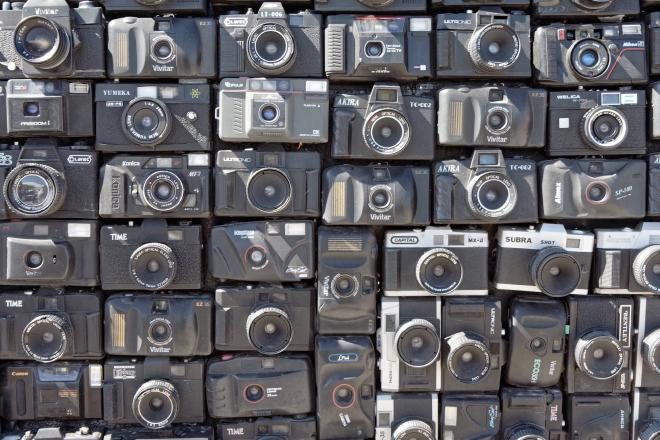
As I get older, I’ve been wanting to look at photographs of the past. Not just my past, but the past in general. There’s something fascinating about photographs of (say) New York in the 1940s, or London during the Swinging ’60s.
If I look for photos of places I grew up, though, it’s hard to find any. I think to understand why requires thinking about how the technology of photography has changed. It’s getting hard to remember what it was like in a world where we didn’t all have high quality cameras with us all the time, even though that world was only a couple of decades ago…
In the late 20th Century, the cheapest cameras had no focusing ability. Instead, they had a fairly narrow aperture lens, which meant there was quite a wide distance range in which things would be more or less in focus. Still, if you were too close to the subject, you’d get a blurry photo. The narrow aperture also meant you could forget about taking photos indoors unless you used flash. In fact, even cloudy daytime weather could be a challenge.
The cheap fixed-focus cameras were viewfinder cameras. You looked through a small telescope-like lens arrangement embedded in the camera, designed to show you a view of roughly what the main lens was pointed at. I say “roughly”, because the viewfinder couldn’t be in exactly the same position as the lens, so the closer the subject, the more chance the viewfinder wouldn’t show exactly what was in shot. I think this is part of why if you look at photos from the 1950s through to the 1990s, people tended to put the subject of the photo right in the center, with large spaces around the outside.
Slightly fancier cameras had an actual focus ring on the lens. Sometimes it had settings for “close” and “distant”; sometimes it had actual numbers, and you would estimate how far away the subject was, then turn the focus ring to the appropriate number. As well as focus being manual, exposure was often manual as well — you’d carry a separate handheld exposure meter that would say how much light there was. You’d then take that number and look it up on a table to see what aperture the lens should be set to, and turn the appropriate dial. Taking a good photograph with a camera like that was not a fast process, and there was a lot of scope for errors.
The next step up was a rangefinder camera. That meant it had two viewfinder-like lenses on the front connecting to the eyepiece on the back. Each front lens of the rangefinder showed some sort of marker in your field of view. The lenses were linked to the focus ring of the main lens; you looked through the rangefinder, positioned the markers on the object you wanted to focus on, and turned the main lens focus ring until the markers were on top of each other. Generally if your camera was fancy enough to have a rangefinder, it would also have a light meter built in, but setting the lens aperture was still often a manual process. Cameras with fully automatic exposure didn’t exist until 1978 when the Canon A-1 was introduced.
The A-1 was an SLR, a type of camera you only had if you were serious about photography and had a budget to match. The SLR had been invented in the 1930s; by the 1970s, about the cheapest SLR you could get was the Zenit-E, made in the Soviet Union. In 1974, you could pick one up in England for £57. Adjusting for inflation, that’s £850, or just over $1,000. And that was the cheapest SLR. I did not have an SLR.
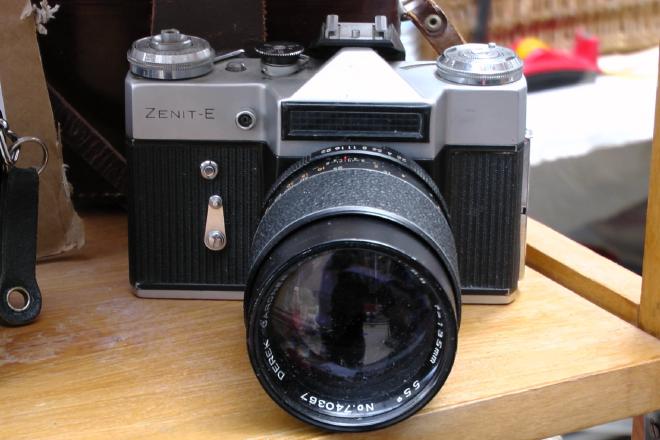
A 1974 SLR was similar in most ways to a modern SLR, but with film instead of a digital sensor. The big benefit of an SLR is that you can see exactly what is going to be recorded in the photograph, a luxury not afforded to those of us using cheaper cameras. (Also a luxury not afforded to those who could only find the money for a Zenit-E — the viewfinder on those only showed about 65% of the image, just one of the many flaws resulting from a thousand dollars of the finest Soviet engineering.)
There were plenty of even more expensive camera options. If you had about $900 in 1974 — equivalent to $6,500 today — you could get yourself a Hasselblad, like the ones the Apollo astronauts took to the moon. Money saving tip: there are still 12 of them up there, and I imagine NASA would let you keep one if you collected it.
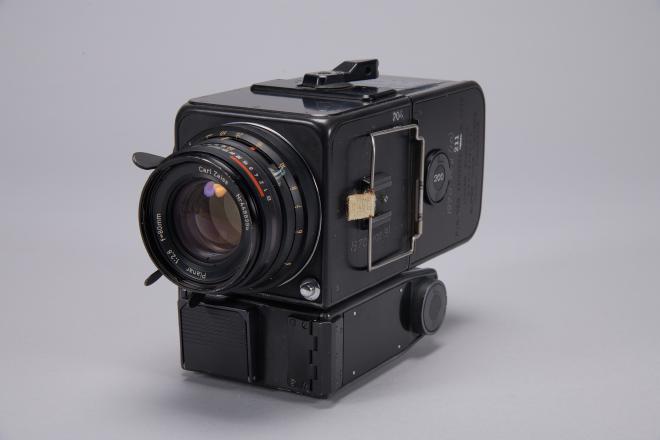
If you wanted to get into photography, the cost of the camera was only part of the story. You also had to buy film, and pay for the film to be processed. You then either had to pay for prints to be made, or put the film in a square cardboard or plastic mount and put it in a slide projector. The slide projector, of course, was an additional piece of equipment to buy, along with a reflective screen to project your photos on.
In early to mid 1970s England, a set of 24 color prints would cost you about £3. The film was about another £1. Adjusting for inflation, that’s about £36 today, or $45; so about £1.50 / $1.88 per shot.
That may not seem like a lot in a world where a cup of regular coffee costs $2 or more, but it was enough to focus the mind of a child spending an allowance (or pocket money, as we called it in England). I wouldn’t take a photo unless I was confident that I would want to look at it later.
Later typically meant weeks later. You couldn’t get the film processed until you’d taken all 24 photos, and even then you’d have to wait a couple of days for the store to do the processing and printing. (One hour photo printing didn’t arrive until the 1980s.) This meant you had no idea whether a given photo was properly in focus, properly exposed, was shot straight, and had the whole of the subject in the frame, until it was way too late to take another one. To compensate for that, you’d have to take more photos.
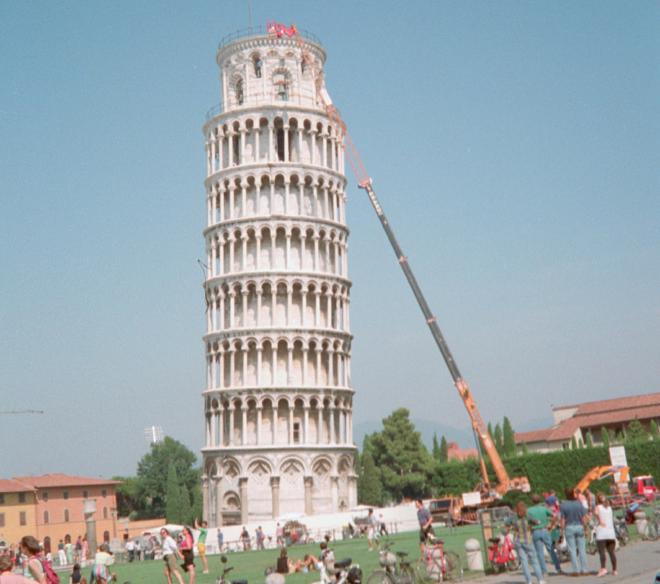
The price of film, and the inconvenience of having to carry spare film around, was enough of an issue that some manufacturers made half-frame 35mm cameras. A half-frame camera used regular 35mm film, but used exactly half as much film per shot. This meant you could get away without special processing, by cutting the prints in half when you got them back. They’d be smaller, of course, but you’d be paying half as much per shot.
There were other ways to economize on processing. If you bought the chemicals and a processing tank and photographic paper and an enlarger, you could process film and make prints yourself. You could also save money by using black and white film, which was about half the price of color and needed fewer chemicals. Shooting in black and white also had the added advantage that you could have a red light on in your darkroom while doing the work. My dad took that route, so some of my family photos from the 1970s are in black and white.
The price of film and processing, and the time it took to get photos back, also had an effect on the quality of the photos you ended up taking. The great photographers of the 1970s got to be great photographers by spending a lot of money taking a lot of photographs of the same subject — multiple rolls of film of a single model in a studio, for instance. They’d then show people the two or three photos that came out really good. Beginning photographers would also record the camera settings they used, and learn over time how best to expose particular subjects.
That’s still the secret today, but now you don’t have to write anything down, you don’t have to pay $1.88 per shot, and you can see which photos came out the best a few seconds after taking them. It’s hard to overstate how much easier it is to get better at photography if you get a modern digital SLR and take a ton of photos, ideally using manual mode.
I’ve been unable to shake the habit of being frugal taking photos, even now that they cost basically nothing. I’ll take 2 or 3 shots of something and pick the best, but the idea of taking 20 or 30 is utterly foreign to me. (I’ve done it once in recent memory, and that was when I needed a professional looking headshot for work.) Even without masses of duplicates, I now have a little over 14,500 photos. If I’d taken all of them using film, that would be over $27,000 worth.
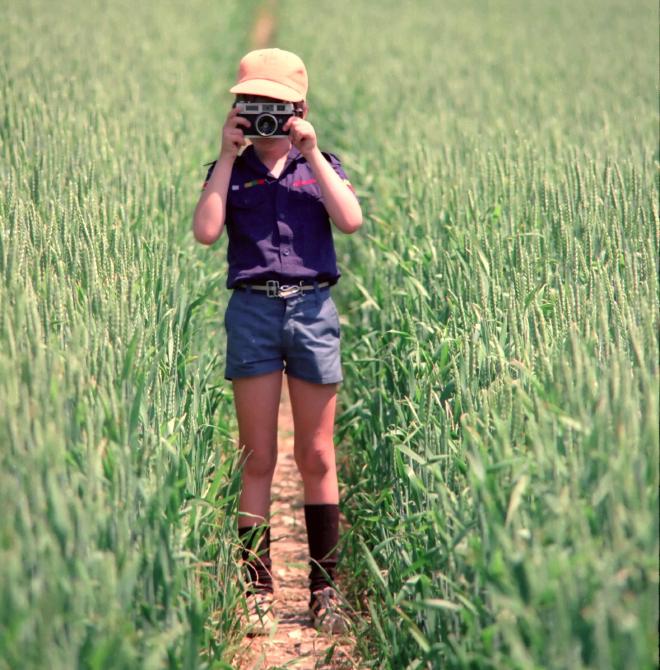
There’s another big difference between 1970s cameras and modern ones that I haven’t mentioned yet: 1970s cameras were made out of metal. My current SLR weighs 407g, and that’s heavy enough that I don’t carry it with me on a regular basis. The affordable Zenit-E I mentioned earlier weighed 1kg, and was inconveniently large as well. There were cameras you could fit in your pocket that took 110 film, but that resulted in tiny negatives and poor image quality.
Putting this all together: 1970s cameras were expensive, and the good ones tended to be big and heavy, so you didn’t carry them around except on special occasions like vacations, Christmas gatherings, and birthday parties. You had to pay for every photo you took, which discouraged you from taking frivolous photos. If you did decide to take a photo, you probably didn’t have much experience to make sure it was a good photo.
Filtering further, if someone did for some reason take a photo of (say) the Boyers pork pie factory in Amersham in 1976, there’s a good chance they haven’t considered it worth scanning and uploading and annotating so that I can find it. I certainly didn’t consider it worth taking a photo of at the time, so now I mostly remember the smell.
All of this means that you won’t find many well-shot photographs of ordinary everyday life in the 1960s and 1970s. I took photos of mundane streets, houses, apartments and other places — but not nearly enough, and not until the 90s.
Then as I continued looking for photos of places from my past, I began to notice something. Apart from photos of London, which was extremely well photographed, most of the photos I could find of childhood places had been uploaded because they had one of two things in the foreground: a bus, or a train. I knew about trainspotters, but it turns out that there are people who are really into buses as well. I found a photo of the park where I used to play as a young child, because it happened to have a London Transport AEC Merlin bus in front. In another photo, part of Harefield high street is visible behind a National Express Green Line coach. And while the pork pie factory may have disappeared into the mists of time, there are a ton of photos of the Amersham bus depot through the years, many of them helpfully annotated with information about the buses shown, and the routes they were on.
So if historians of the future want to assemble photos of the shops in Old Amersham in the late 1970s, they’ll be out of luck; but if they want to know what the 362 to High Wycombe looked like, they’ll have plenty of photographs of both the regular bus, and the peak-hours double-decker. This strikes me as funny.
I should say that I’m not saying there’s anything laughable about taking photos of buses. I’ve taken a few in my time. Here’s a photo of a bus in Cambridge Massachusetts that I rather liked the color of:
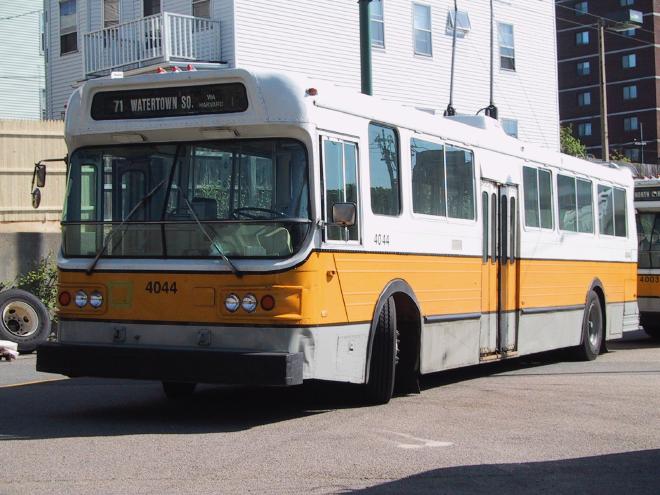
So nothing wrong with bus photos, it’s just amusing to me that there are ordinary everyday things we’ve ignored and forgotten, and equally ordinary everyday things that have been photographed and documented in tremendous detail.
I now take more photos of everyday events happening in unremarkable places. Before we left Texas I walked many of the streets in our neighborhood, just photographing how they looked, in case I should want to look at those photos in a decade or two. I don’t think I will, but it didn’t cost me anything other than my time, so why not?